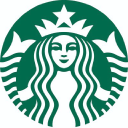Why Is The Market Discounting Starbucks’ Growth Story?
Starbucks’ (NASDAQ:SBUX) stock did not have a great beginning to the year 2017. While the company has been consistently delivering growth in the top line, and returns to its shareholders through buybacks and dividend payments, we have seen its stock price stagnate for most of 2016. In this article, we elaborate on why the market is worried about the company’s future growth prospects, despite the growth being delivered by it.
Stagnation In Comps In North America
Traditionally, the biggest contributor towards Starbucks’ revenues, North America, has seen traffic and comp declines over most of 2016. From 7% y-o-y growth in the March quarter of 2016, to 3% y-o-y growth in the December quarter of 2016, the company’s comps have been on a downward trajectory. Starbucks has been leaning on higher average transaction prices to make up for decelerating traffic growth. Although the management attributes the slowdown in the December quarter to the “good problem” of high Mobile Order and Pay demand, which the company was unable to fulfill, investors remain wary likely due to the decline in the traffic claimed by Starbucks in February. According to the data from mobile specialist xAd, Starbucks nailed down 11% of quick-service restaurant traffic during the month of February, down from 12% in January, and lower than some rivals. The likely reason behind this drop are the initiatives undertaken by Dunkin’ Brands and McDonald’s to revive the demand for their coffee.
- Should You Pick Starbucks Stock At $111?
- Starbucks’ China Sales Decline Amidst Intensifying Competition
- Starbucks Stock Can 2X Now
- Here’s How Starbucks Stock Could Grow To $190
- Down 23% This Year, Will Starbucks’ Stock Recover Following Q3 Results?
- Can Starbucks’ Stock Rise 55% To Its Pre-Inflation Shock Highs?
To deal with the high demand and alleviate congestion at the hand-off counter, the company has added more baristas at its stores. Consequently, the management is confident that the comp sales issues created by mobile customer volume will be resolved by the end of 2017, resulting in an accrual of benefits in the second half of the year. While Cleveland Research forecasts comparable sales for Starbucks to increase 3.0% in the March quarter as opposed to the consensus estimate for a 3.6% gain, we have a positive outlook on the company for the long term, given its past track record of dealing with such operational bottlenecks. While the problem may not be resolved immediately, we expect comps in the Americas to rebound as the company and customers get time to adjust to the new realities.
Some of President Trump’s supporters have called for the boycott of Starbucks since the beginning of his campaign, blaming the company for exporting jobs to non-Americans. Furthermore, when the President called for a travel ban on seven Muslim nations, Starbucks responded by promising to hire 10,000 refugees globally over the next five years. This was largely touted as an anti-American sentiment, resulting in another call for boycotting Starbucks. These boycotts are expected to have a negative effect on the company’s comps, especially in America, and may even affect store openings due to regulatory hurdles.
Similarly, Chinese sales, which are growing at a pace twice as fast as the Americas, may also see deterioration if a trade war begins between the U.S. and China. Currently, more than half of the company’s stores are outside of the U.S., and the company aims to open 1,300 of 2,100 new stores internationally in 2017. The CEO expects China to become the company’s largest market in the future. Given Starbucks’ heavy reliance on the region for future growth, these conflicts do not bode well.
However, results of a YouGov BrandIndex survey suggesting a “Starbucks boycott campaign has dented the brand” does not reflect damage in customer satisfaction and perception so far in 2017.
Downturn In U.S. Restaurant Industry
The U.S. restaurant industry has been crippled by a lack of consumer spending since 2016. In almost every month of 2016, an industry-wide decline was seen in traffic and comparable sales. This is attributable to a number of developments: higher costs for healthcare, rent, and student loans, and the widening gap between the cost of eating at home versus away. Although commodity prices have been falling, this has been offset by higher labor costs. Consequently, the benefit of lower commodity prices has not translated into price cuts at restaurants. This has led to widening of the gap between cost of food at home and cost of food away from home, causing sales in the restaurant industry to decline.

The situation is expected to get worse once food prices catch the inflationary trend, as this is going to put pressure on profitability. Already milk prices and coffee prices are seen trending upwards. While milk prices are up due to fewer cows making milk to meet demand for cheese and butter, coffee prices have been boosted by supply constraints. The International Coffee Organization expects coffee harvests to have shortfalls in leading coffee-supplying countries. Poor weather conditions in Brazil, the leading supplier of arabica beans, and the drought in Vietnam, the largest producer of robusta beans, could pose major supply concerns for the industry. Consequently, we can expect Starbucks’ margins to get impacted, unless it transfers the price in the way of a rate hike to customers.

Notes:
See More at Trefis | View Interactive Institutional Research (Powered by Trefis)
